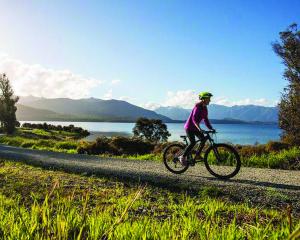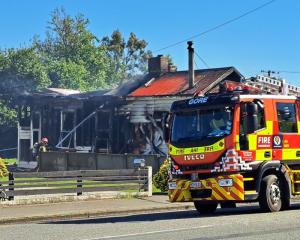Farmers in parts of Otago face the driest conditions in decades and rock-bottom lamb prices are adding to their pain.
All farmers spoken to by the Otago Daily Times yesterday said things were bad, including one inland of Palmerston who said there had been no significant spells of rain since midway through 2014.
Rural Livestock Ltd manager Rob Fowler said morale was low among farmers in the region and farmers forced to de-stock because of a lack of feed were being hit hard by "ridiculously low'' lamb prices.
"Most of the farmers have had a gutsful,'' he said yesterday.
"I've been in it 30-odd years and this is as bad as it's been.
"I'm standing with a farmer on the Otago Peninsula right now and it's dust and no feed and the lambs have got to go.''
Niwa warned there looked to be no respite from extremely dry conditions in some parts of Otago as El Nino conditions were "100% certain'' to continue for the next three months.
The Otago Rural Fire Authority has declared a total fire ban across most of the region as the fire risk swells in hot and dry weather and with increasing water shortages.
Federated Farmers Otago president Phil Hunt said the drought had reached a "critical'' point in parts of Otago, including in the Upper Clutha where he had farmed since 1989.
"This would be as dry as I have seen it in the Upper Clutha at this time of year,'' Mr Hunt said.
Most of the region was very dry. A few areas, such as West and South Otago, had fared a little better than the rest.
"Some people have had showers of rain that have come through that have given them just enough to keep going and other areas have had nothing.''
The dry conditions meant there was not enough feed, which had forced farmers to de-stock at a time when lamb prices were "well below the five-year average''.
The freezing works were so busy some farmers were unable to get rid of stock as soon as they wanted to.
"We often hear in the media that sheep and beef farmers are doing all right because beef prices are up.''
This was not the case in Otago, as there was a much higher ratio of sheep to beef in the region than in the North Island, Mr Hunt said.
The only positive thing was the dry summer was predicted, which meant farmers were prepared.
Otago Regional Council chairman Stephen Woodhead said sharing water between irrigators would be "critical'' in the province again this summer.
Federated Farmers North Otago president Richard Strowger said the drought had been going on for 15 months and with El Nino in full swing it was not predicted to let up soon.
For the drought to break a "good four inches'' (10cm) of rain spread out over a decent period was needed.
"Our sub-soils are fine particles, so they can hold a lot of moisture, but they can't absorb the moisture fast.
"So we need slow, drenching rain that doesn't run off.''
For farmers who were "close to the wire'' already, it would be crucially important stock prices picked up next year.
"It's more of a case of when this finishes what prices rebound to, as to whether we can pull out of it or not.
"Right now it stretches people, but if we can get some good payouts next year, usually people can cope with it.''
Dunback farmer Ken Fergusson said conditions were the driest he had seen in the eight years he had been farming there.
He had been forced to sell stock and the lack of rain was compounded by the dry summer last year and a lack of spring growth.
The dry conditions were a "double whammy'' after 100ha of his property was damaged in a fire in October last year, destroying some of his cow feed.











